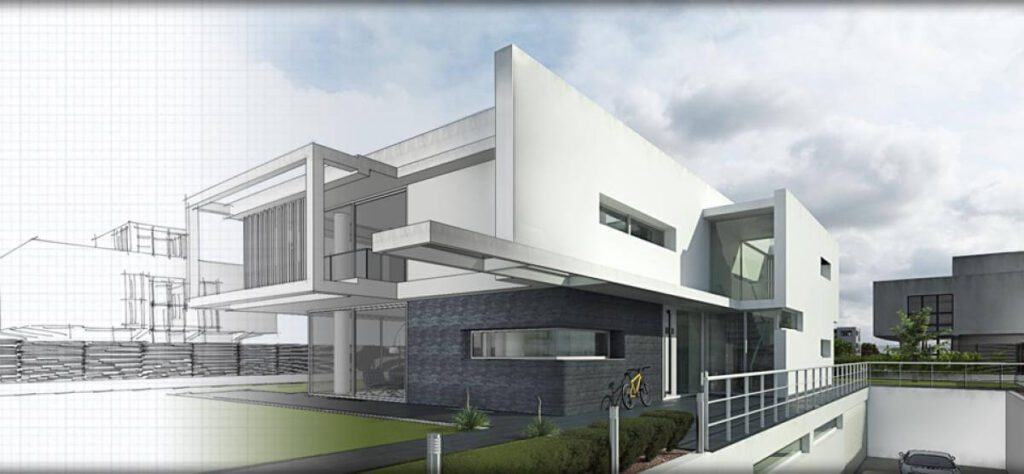Architectural design has evolved significantly with advancements in technology, and software tools play a crucial role in shaping the industry. Whether you’re an experienced architect, a student, or an enthusiast, selecting the right software can enhance creativity, improve efficiency, and simplify complex tasks. Here is an overview of some of the best software for architectural design, categorised by their unique strengths and features.

1. AutoCAD
AutoCAD by Autodesk is one of the most widely used tools in the architecture industry. Known for its precision and versatility, it is ideal for 2D draughting and 3D modelling.
- Features:
- Extensive draughting tools.
- Layer management for complex projects.
- Integration with other Autodesk products.
- Best For:
- Professionals focusing on detailed technical drawings and construction documentation.
- Limitations:
- Steep learning curve for beginners.
- Limited visualisation capabilities compared to newer 3D software.
2. Revit
Revit, also developed by Autodesk, is a building information modelling (BIM) software specifically designed for architects and engineers.
- Features:
- Parametric modelling for efficient changes.
- Detailed BIM workflows for collaboration.
- Realistic visualisation tools.
- Best For:
- Large-scale architectural projects require` collaboration among multiple disciplines.
- Limitations:
- Requires significant hardware resources.
- More expensive compared to other options.
3. SketchUp
SketchUp is a user-friendly software ideal for creating conceptual 3D models and visualisations.
- Features:
- Intuitive interface with an easy learning curve.
- An extensive library of predesigned components.
- Integration with rendering plugins like V-Ray.
- Best For:
- Quick conceptual designs and presentations.
- Limitations:
- Lacks advanced BIM capabilities.
- Limited to smaller projects in its free version.
4. Rhino 3D
Rhino 3D is renowned for its advanced modelling capabilities and ability to handle complex geometry.
- Features:
- NURBS modelling for precision surfaces.
- Grasshopper plugin for parametric design.
- Extensive compatibility with other design software.
- Best For:
- Architects focused on experimental and organic forms.
- Limitations:
- Not suitable for detailed BIM workflows.
- Requires additional plugins for rendering.
5. ArchiCAD
ArchiCAD by Graphisoft is another popular BIM software, known for its intuitive design and robust features.
- Features:
- Integrated 2D and 3D design workflows.
- Built-in rendering engine.
- Team collaboration tools.
- Best For:
- Small to medium-sized firms requiring BIM functionality.
- Limitations:
- Limited plugin ecosystem compared to competitors.
- Higher upfront cost.
6. 3ds Max
3ds Max by Autodesk is a powerful tool for architectural visualisation, offering stunning renders and animations.
- Features:
- Advanced rendering tools (integrated Arnold renderer).
- Extensive material libraries.
- Support for virtual reality experiences.
- Best For:
- Architects specialise in high-quality visualisations.
- Limitations:
- Primarily focused on rendering, not ideal for drawing or BIM.
- High learning curve.
7. Lumion
Lumion is specifically designed for architectural rendering and visualisation, offering fast and impressive results.
- Features:
- Real-time rendering capabilities.
- A vast library of assets (trees, people, materials).
- Easy-to-use interface.
- Best For:
- Architects aim to create immersive presentations.
- Limitations:
- Limited modelling capabilities.
- Requires high-end hardware for smooth performance.
8. Blender
Blender is an open-source 3D modelling software with powerful rendering and animation tools.
- Features:
- Free to use.
- Advanced rendering with Cycles and Evee engines.
- Highly customisable through scripts and plugins.
- Best For:
- Independent architects and students on a budget.
- Limitations:
- The steeper learning curve for architectural workflows.
- Lacks built-in BIM features.
How to Choose the Right Software
Selecting the right software depends on several factors:
- Project Scope: Determine if you need tools for draughting, modelling, or visualisation.
- Budget: Some tools, like Blender, are free, while others, like Revit, require a significant investment.
- Skill Level: Beginners might prefer intuitive tools like SketchUp, while advanced users may benefit from Rhino or Revit.
- Hardware Capabilities: High-end tools like Lumion and 3Ds Max require powerful systems.
Conclusion
Architectural design software has revolutionised the way professionals visualise and execute projects. From draughting to immersive visualisations, the right software can make all the difference. Tools like AutoCAD and Revit dominate the industry for their precision and BIM capabilities, while SketchUp and Lumion cater to those looking for ease of use and stunning renders. Evaluate your needs and resources to make an informed choice, ensuring the software you select aligns with your professional goals.

